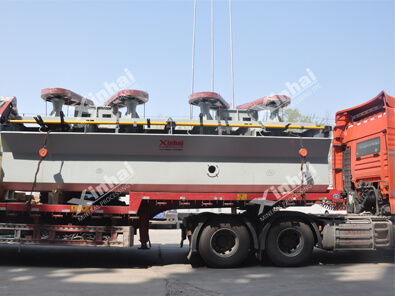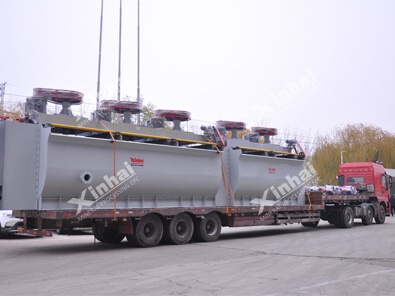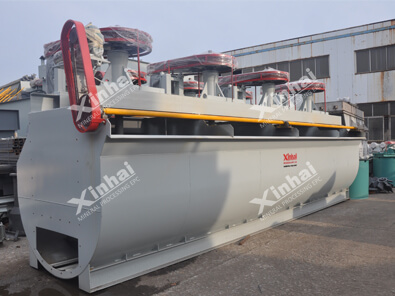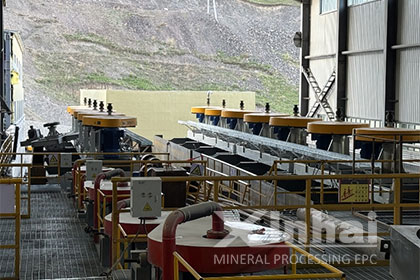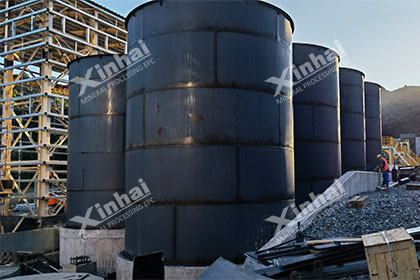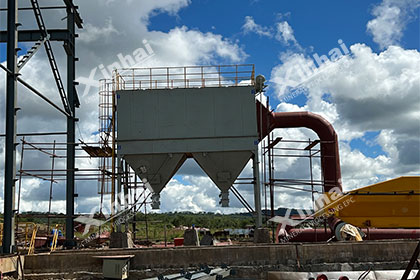What are the Flotation Reagents for Barite?
 Shirley
Shirley
 May 19, 2023
May 19, 2023
 1400
1400
If you want to know more details about equipment, solutions, etc, please click the button below for free consultation, or leave your requirements!
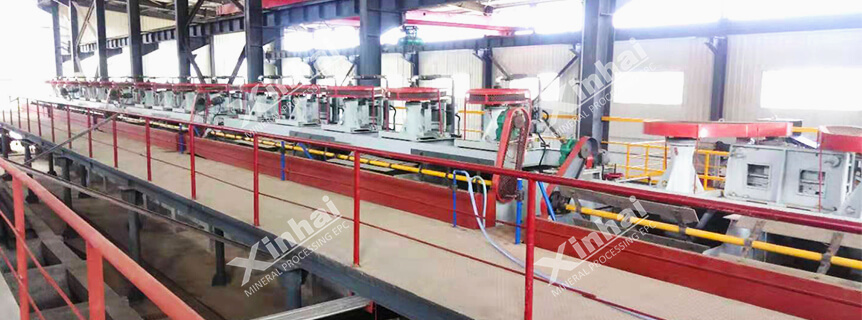
Barite ore contains various associated minerals, including quartz, calcite, and dolomite. These associated minerals are easily activated during flotation and have similar surface properties to barite, making separation difficult. Therefore, increasing the difference in floatability between barite and associated minerals is the key and difficulty of barite flotation separation. Flotation reagents can change the surface properties of minerals and enhance the hydrophobicity difference between minerals, thereby achieving the separation of barite. In this article, we will introduce barite collectors and depressants.
01Barite flotation collectors
BackBarite flotation collectors can be divided into fatty acid collectors, amine collectors, alkyl sulfate collectors, phosphonic acid collectors, and combination collectors.
1. Fatty acid collectors
Fatty acid collectors are commonly used in barite flotation and include oleic acid, sodium oleate, and oxidized paraffin soap. The carboxyl functional group of fatty acids can form complexes with metal ions on the surface of various minerals, and can also form insoluble compounds with alkaline earth metal and heavy metal ions. Fatty acid collectors have the characteristics of strong collecting ability and low dosage of reagents, but the flotation effect is easily affected by ions such as calcium and magnesium.
2. Amine collectors
Amine collectors belong to the category of cationic collectors, and common amine collectors include alkyl amines and sulfonated butyramide. They mainly function through electrostatic adsorption, semi-micelle adsorption, molecular adsorption and exchange adsorption. Amine collectors are commonly used in barite reverse flotation processes and have high requirements for the slurry condition.
3. Alkyl sulfate collectors
Alkyl sulfate collectors are anionic collectors, including sodium dodecyl sulfate, sodium dodecyl sulfonate, and sodium dodecyl benzene sulfonate. These collectors mainly adsorb onto barite through chemical adsorption, and are less affected by changes in pH values. They are generally used in combination with fatty acid collectors to improve the selectivity and collecting ability of the reagents.
4. Phosphonic acid collectors
Phosphonic acid collectors include alkyl α-hydroxy-1,1-diphosphonic acid, α-amino bisphosphonic acid, and β-amino alkyl phosphonic acid. They have better flotation and recovery effects on barite in weakly alkaline environments, and can simultaneously undergo physical and chemical adsorption on the surface of barite.
5. Combination collectors
In barite flotation, two or more reagents with strong collecting ability and good selectivity are often combined. The most common combination is the combination of fatty acid collectors and alkyl sulfate collectors. When using combination collectors in flotation, the reagents can promote each other and play a synergistic role.
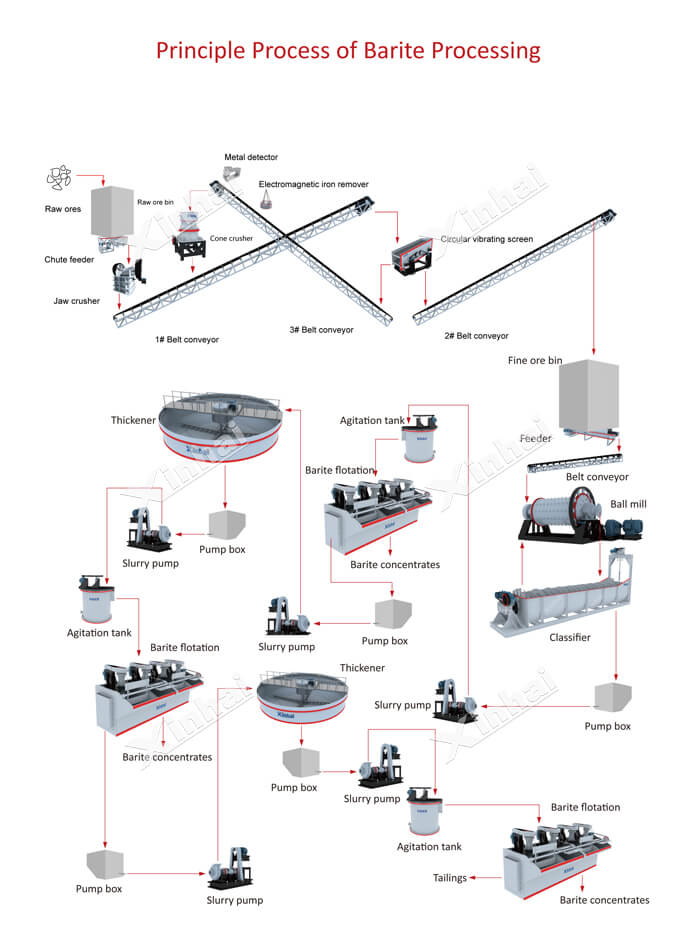
02Barite flotation depressants
BackBarite flotation depressants include inorganic depressants, organic depressants, combination depressants, etc.
1. Inorganic depressants
Inorganic depressants include sodium silicate, sodium fluoride, sodium hexametaphosphate, and sulfates, etc. During barite flotation, sodium silicate is commonly used to depress gangue minerals such as quartz, calcite, and feldspar under weak alkaline conditions. During barite reverse flotation, sulfates and water glass are used to depress barite. Water glass hydrolyzes in the solution to form a strong hydrophilic substance that can adsorb onto the surface of gangue minerals, enhancing their hydrophilicity and obstructing the action of collectors such as oleic acid, reducing the floatability of gangue minerals. Metal salts can promote the hydrolysis of sodium silicate, enhancing its hydrophilicity. Therefore, sodium silicate is often mixed with metal salts to reduce its dosage.
2. Organic depressants
Organic depressants are often high molecular weight polymers containing multiple hydroxyl or carboxyl groups, such as starch, dextrin, carboxymethyl cellulose, xanthan gum, and tannic acid, etc. Citric acid can promote the dissolution and detachment of Ca2+ on the surface of fluorite, reducing the active adsorption sites of sodium oleate on its surface, reducing the floatability of fluorite, achieving selective separation of barite and fluorite. Organic depressants have strong depressing effect but poor selectivity. When used in combination with inorganic depressants, better separation effect can be achieved.
3. Combination depressants
During the flotation of barite and gangue minerals such as quartz, mica, and feldspar, inorganic depressants are often combined to mutually depress gangue minerals. Examples include the combination of water glass and sodium hexametaphosphate, water glass and sodium fluoride, and water glass and potassium aluminum sulfate. Combination depressants can improve the problems of large dosage and poor selectivity of single depressants. By synergistic depression of reagents, they can enhance the depression effect of certain minerals, improve the separation efficiency, and reduce the dosage of reagents, thus reducing production costs.
03To Wrap Up
BackThe above is about barite flotation collectors and depressants. In actual production, the barite flotation reagent system should be determined based on the specific properties and composition of the ore. It is recommended to conduct ore dressing tests first to scientifically and reasonably formulate a suitable barite ore dressing plan to avoid waste of resources and economic losses. You can also click to know 5 Methods for Barite Beneficiation Process.
 +86 183 3575 8886
+86 183 3575 8886 pinklaurabao@gmail.com
pinklaurabao@gmail.com




 Message
Message Chat Now
Chat Now


